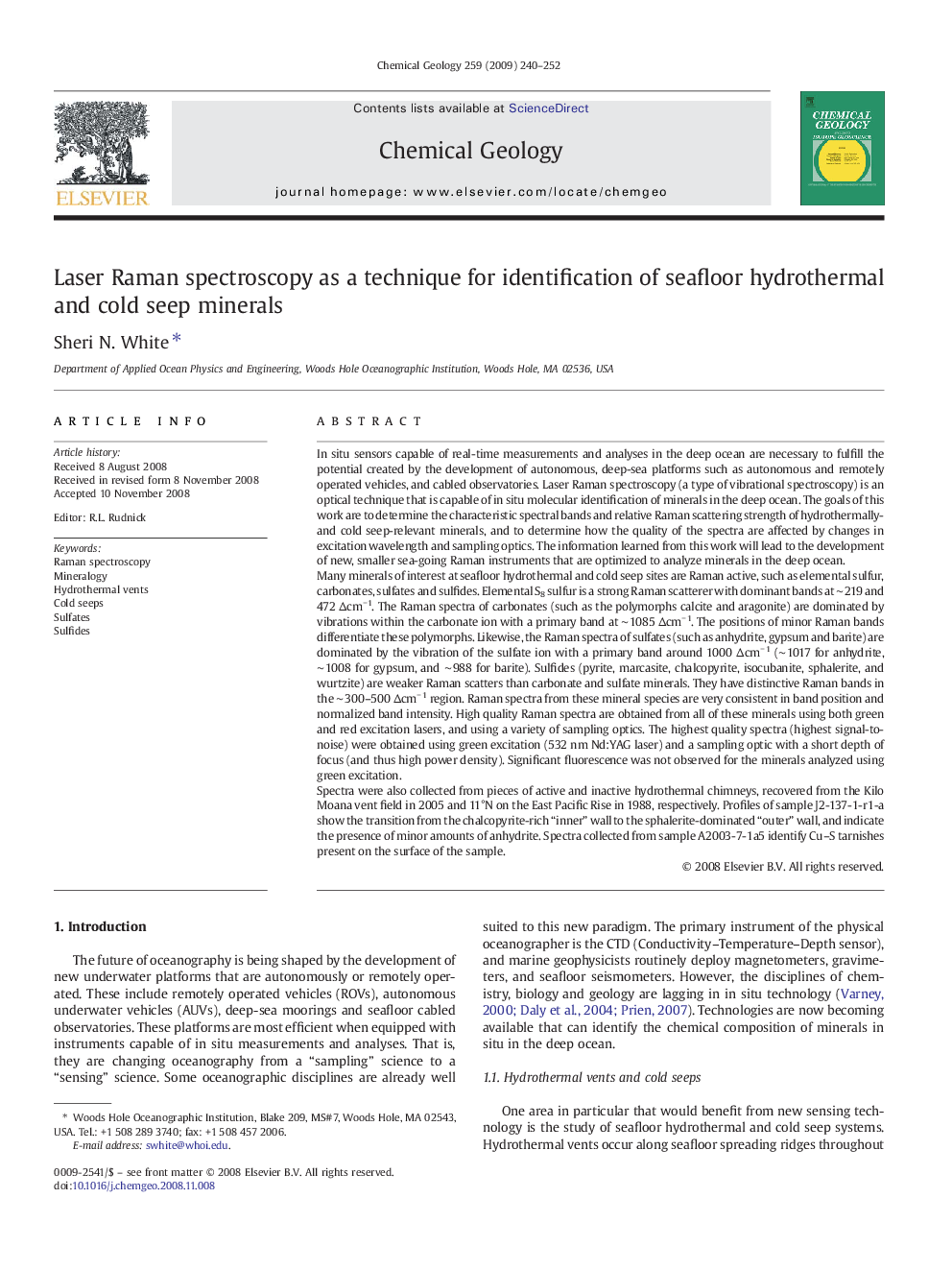| کد مقاله | کد نشریه | سال انتشار | مقاله انگلیسی | نسخه تمام متن |
|---|---|---|---|---|
| 4700407 | 1637713 | 2009 | 13 صفحه PDF | دانلود رایگان |

In situ sensors capable of real-time measurements and analyses in the deep ocean are necessary to fulfill the potential created by the development of autonomous, deep-sea platforms such as autonomous and remotely operated vehicles, and cabled observatories. Laser Raman spectroscopy (a type of vibrational spectroscopy) is an optical technique that is capable of in situ molecular identification of minerals in the deep ocean. The goals of this work are to determine the characteristic spectral bands and relative Raman scattering strength of hydrothermally- and cold seep-relevant minerals, and to determine how the quality of the spectra are affected by changes in excitation wavelength and sampling optics. The information learned from this work will lead to the development of new, smaller sea-going Raman instruments that are optimized to analyze minerals in the deep ocean.Many minerals of interest at seafloor hydrothermal and cold seep sites are Raman active, such as elemental sulfur, carbonates, sulfates and sulfides. Elemental S8 sulfur is a strong Raman scatterer with dominant bands at ∼ 219 and 472 Δcm− 1. The Raman spectra of carbonates (such as the polymorphs calcite and aragonite) are dominated by vibrations within the carbonate ion with a primary band at ∼ 1085 Δcm− 1. The positions of minor Raman bands differentiate these polymorphs. Likewise, the Raman spectra of sulfates (such as anhydrite, gypsum and barite) are dominated by the vibration of the sulfate ion with a primary band around 1000 Δcm− 1 (∼ 1017 for anhydrite, ∼ 1008 for gypsum, and ∼ 988 for barite). Sulfides (pyrite, marcasite, chalcopyrite, isocubanite, sphalerite, and wurtzite) are weaker Raman scatters than carbonate and sulfate minerals. They have distinctive Raman bands in the ∼ 300–500 Δcm− 1 region. Raman spectra from these mineral species are very consistent in band position and normalized band intensity. High quality Raman spectra are obtained from all of these minerals using both green and red excitation lasers, and using a variety of sampling optics. The highest quality spectra (highest signal-to-noise) were obtained using green excitation (532 nm Nd:YAG laser) and a sampling optic with a short depth of focus (and thus high power density). Significant fluorescence was not observed for the minerals analyzed using green excitation.Spectra were also collected from pieces of active and inactive hydrothermal chimneys, recovered from the Kilo Moana vent field in 2005 and 11°N on the East Pacific Rise in 1988, respectively. Profiles of sample J2-137-1-r1-a show the transition from the chalcopyrite-rich “inner” wall to the sphalerite-dominated “outer” wall, and indicate the presence of minor amounts of anhydrite. Spectra collected from sample A2003-7-1a5 identify Cu–S tarnishes present on the surface of the sample.
Journal: Chemical Geology - Volume 259, Issues 3–4, 25 February 2009, Pages 240–252